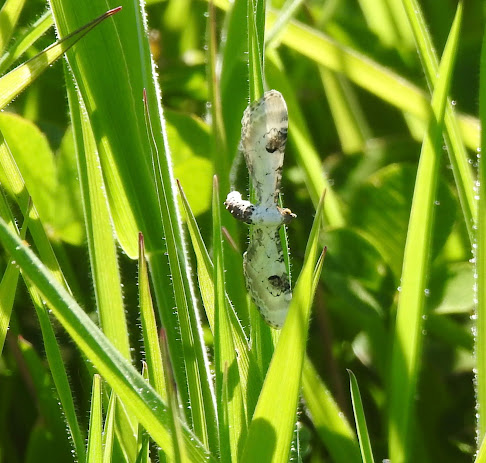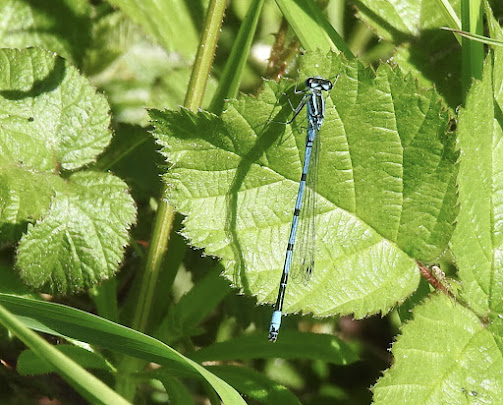I set off this morning hopeful of extending the spring vibe a little further. During the week two Spotted Flycatchers were reported on Birdtrack as being at Morton Bagot. My suspicion was that the record might actually refer to Bannams Wood, so I headed up the track to the place where there had been a territorial pair last year.
The weather was not playing ball. A blustery westerly is not ideal. After about half an hour of searching I had to settle for two Garden Warblers singing at each other, and no Spot Flys.
Plan B was to walk down the road and cut across the HOEF plantations towards the place favoured by the ringers. A Red Kite headed for Bannams, and was briefly mobbed by a Peregrine. I couldn't tell whether the latter was an adult or an immature, and it eventually drifted off west.
I ended up at the flash field where I was pleasantly surprised to see that a small amount of shore had reappeared and was occupied by two adult Little Ringed Plovers. As I walked along the footpath towards the best viewing position I was dismayed to hear a digger and voices coming from the Kingfisher Pool. I had to sneak through the hedge just short of the pool to avoid any awkward conversations with the guys creating what I assume will become a fishing pool.
Once under the trees overlooking the nearest flash I was faced with nine pairs of Greylag Geese with at least eight broods of different sized goslings, and also the pair of Shelducks with their eight duckling family still intact. One or two Lapwings were also present, but I couldn't see any chicks.
On the walk back I heard two singing Lesser Whitethroats, and fluked a view of a different one which was probably heading for a nest within a dense bramble clump.
So there we are, all birds, no insects. Except I saw a Painted Lady as I walked across the old pool field. Oh drat.
My second this year. There may have been a good immigration this year, so more should follow.






































